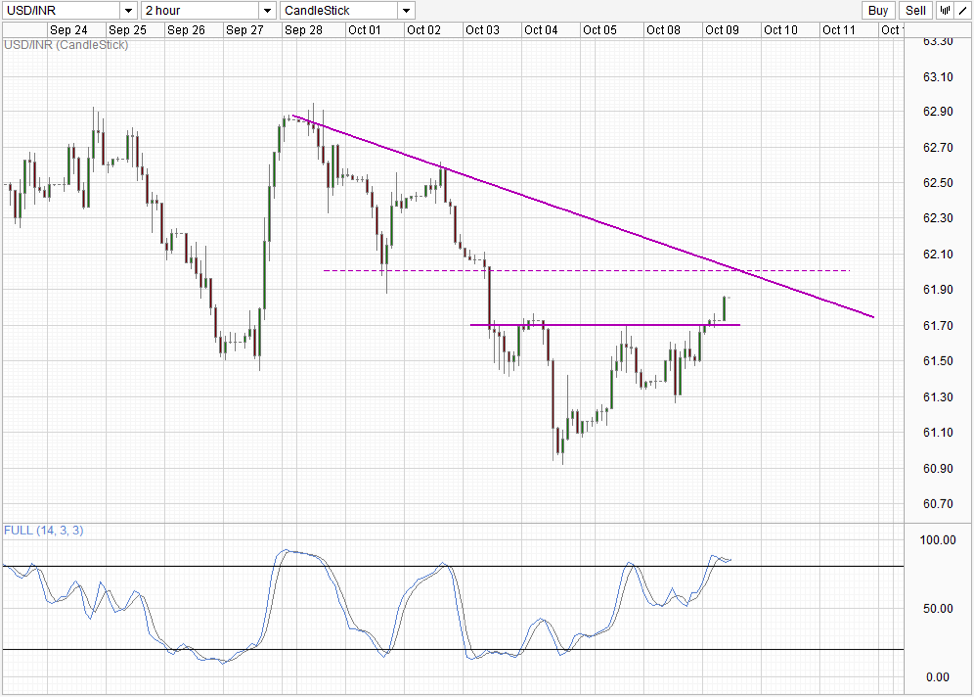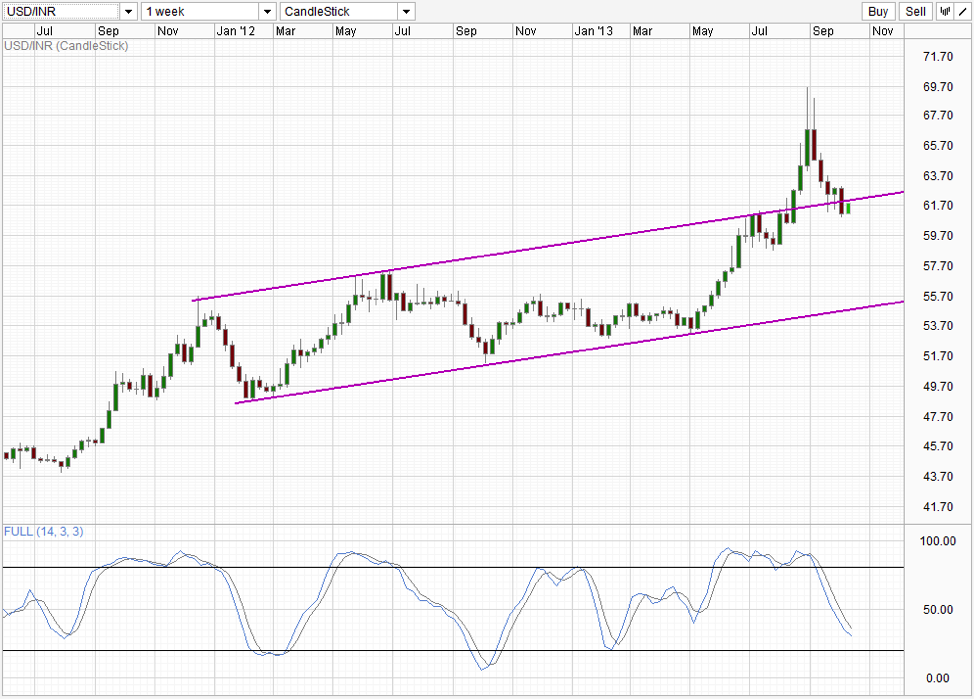Rupee weakened against the Greenback yesterday, with USD/INR clearing the 61.70 ceiling, alleviating short-term bearish pressure.
The catalyst for yesterday’s increase can be attributed to the temporary resurgence in USD during US session, with the Dollar higher against all 7 major currencies on a D/D basis. This increase in USD has been attributed to market’s approval to Obama’s nomination of Janet Yellen for the position of Fed Chairman which brought some joy amidst all the issues surrounding the Debt Ceiling dateline and the continuing Government Shutdown which has no end in sight.
Within India, things are not looking great either. Workers are going on strike in response to Prime Minister Manmohan Singh’s move of Hyderabad’s – India’s 6th Largest city, into the newly created Telangana state’s jurisdiction. This move has been seen as a pure politicking move for Singh to consolidate power, and is highly unpopular amongst Hyderabad’s residents. The unrest shut down power plants and has affected both residents and businesses such as Microsoft and Google who have offices in affected areas. If this strike goes on, the slowdown in business activities will hamper the economic recovery efforts of both Central Bank RBI and the Government, weakening Rupee as a result.
2 Hourly Chart
From a technical perspective, despite breaking above 61.7 ceiling and extending the bullish recovery from last Friday’s low, USD/INR is not out of the bearish woods yet. Bulls still need to content with the 62.0 round figure resistance with descending trendline (from 30th Sep decline) providing further resistance. Stochastic also favor a bearish move with Stoch curve already Oversold and is currently pushing lower. However, a proper bearish signal is yet to be formed, and price should ideally move back below 61.7 which will likely coincide with Stoch curve below 80.0 – giving us a strong bearish cycle confirmation.
Nonetheless, if prices manage to clear the 62.0 and intersection with the descending trendline, we could see strong bullish acceleration emerging with 62.9 as bullish target.
Weekly Chart
From the perspective of weekly chart, latest bullish rally can be regarded as a test of the rising Channel Top after we’ve successfully breached into last week. If the rising trendline holds, the breach will be confirmed and opens up Channel Bottom as the ultimate bearish target. However, the most bearish play would actually be prices continue to straddle Channel Top higher without breaking above, with Stoch curve staying below the 50.0. If future price action indeed plays out like this, the likelihood of a stronger technical bearish momentum coming next will be higher with a greater likelihood of breaking the 59.0 – 61.0 consolidation zone back in July. Without this relief rally, bears run the risk of overextending themselves which will increase the support strength of the aforementioned consolidation zone.
Content is for general information purposes only. It is not investment advice or a solution to buy or sell securities. Opinions are the authors; not necessarily that of OANDA Business Information & Services, Inc. or any of its affiliates, subsidiaries, officers or directors. If you would like to reproduce or redistribute any of the content found on MarketPulse, an award winning forex, commodities and global indices analysis and news site service produced by OANDA Business Information & Services, Inc., please access the RSS feed or contact us at info@marketpulse.com. Visit https://www.marketpulse.com/ to find out more about the beat of the global markets. © 2023 OANDA Business Information & Services Inc.




